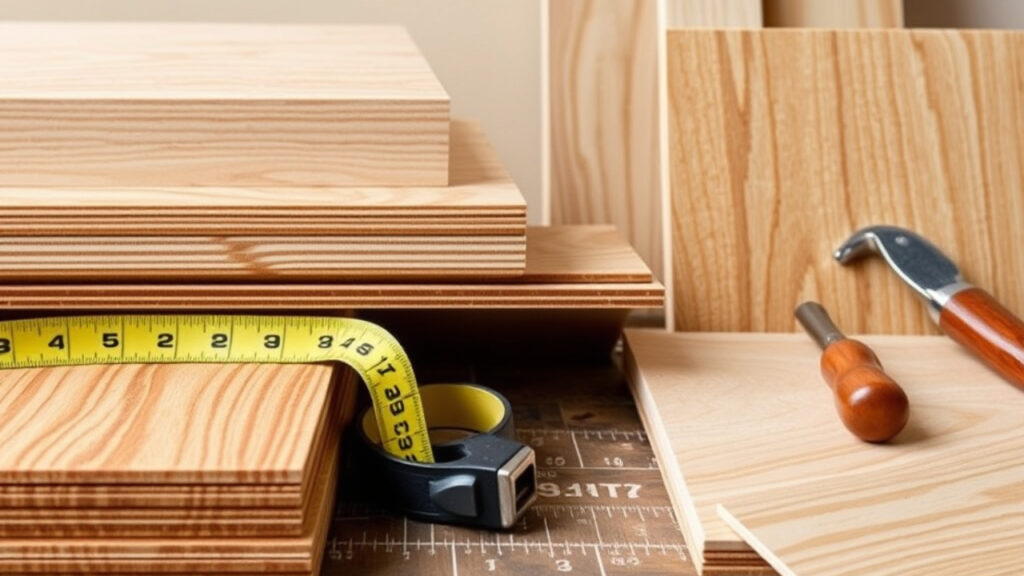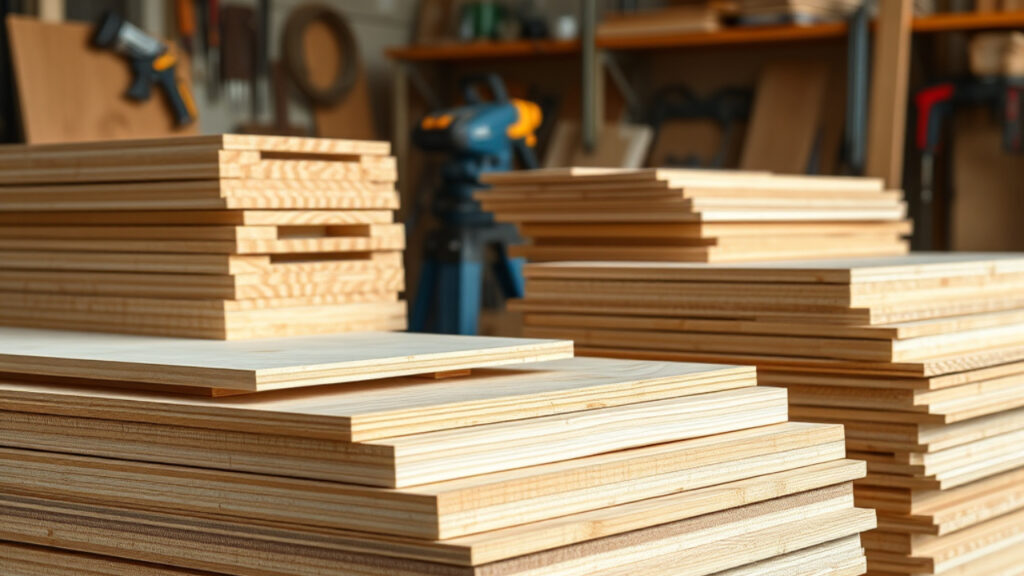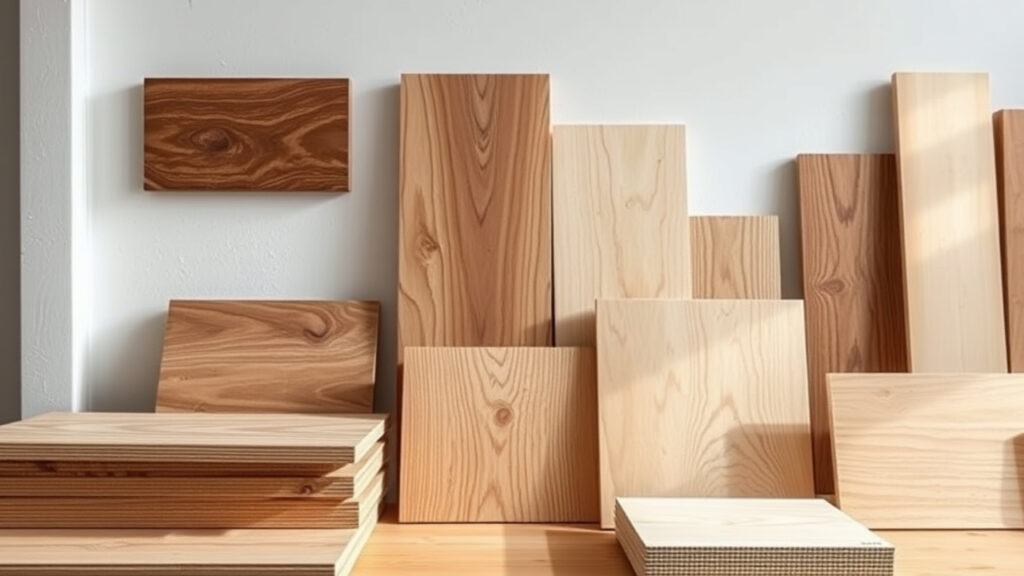Commercial Plywood: The Ultimate Guide to Uses, Benefits, and Buying Tips
Table of Contents
- Introduction to Commercial Plywood
- What is Commercial Plywood?
- How is Commercial Plywood Made?
- Top Features of High-Quality Commercial Plywood
- Applications of Commercial Plywood
- Interior Furniture
- Office Partitions
- Wall Paneling
- Doors and Cabinets
- Advantages of Using Commercial Plywood
- Trending Commercial Plywood Uses in 2025
- How to Choose the Best Commercial Plywood
- Best Commercial Plywood Brands in the Market
- Cost of Commercial Plywood: Budgeting Tips
- Maintenance and Care for Long-Lasting Plywood
- Commercial Plywood vs. Marine Plywood: Key Differences
- Is Commercial Plywood Waterproof? What You Need to Know
- Eco-Friendly and Sustainable Plywood Options
- Frequently Asked Questions (FAQs)
- Conclusion
1. Introduction to Commercial Plywood
Commercial plywood is a widely used engineered wood product known for its versatility and affordability. It is commonly used in furniture making, interior decoration, and construction projects. With advancements in manufacturing techniques, modern commercial plywood offers excellent durability, smooth finishing, and resistance to warping.
In this guide, we’ll explore the latest trends, uses, and benefits of commercial plywood, helping you make an informed decision when choosing plywood for your projects.
2. What is Commercial Plywood?
Commercial plywood, also known as MR (Moisture Resistant) plywood, is an engineered wood product made by bonding multiple layers of veneer with synthetic resin. It is primarily designed for indoor applications and is widely used in furniture and interior décor.
Key Characteristics of Commercial Plywood:
✅ Affordable compared to other types of plywood
✅ Moisture-resistant but not waterproof
✅ Smooth surface for easy finishing
✅ Available in multiple thicknesses and grades
3. How is Commercial Plywood Made?
The manufacturing process of commercial plywood involves several key steps:
- Log Selection & Peeling: High-quality logs are selected and peeled into thin veneer sheets.
- Drying Process: The veneers are dried to remove moisture.
- Layer Arrangement: The veneers are stacked in alternate grain directions for strength.
- Adhesive Application: High-strength synthetic resin is used to bond the layers.
- Hot Pressing: The stacked veneers are pressed under heat and pressure to form a solid sheet.
- Trimming & Finishing: The sheets are cut into standard sizes and finished for smoothness.
- Quality Check: Each sheet undergoes rigorous testing to meet industry standards.
4. Top Features of High-Quality Commercial Plywood
When selecting commercial plywood, look for the following features:
✔ Even Thickness: Uniform thickness across the sheet ensures better strength.
✔ Smooth Surface: A well-finished surface allows for easy polishing and painting.
✔ Minimal Gaps & Voids: High-quality plywood has fewer internal gaps, making it stronger.
✔ Good Bonding Strength: A strong adhesive ensures durability and resistance to warping.
5. Applications of Commercial Plywood
1. Interior Furniture
Commercial plywood is a preferred choice for making home and office furniture, including tables, chairs, and storage units.
2. Office Partitions
Lightweight yet sturdy, commercial plywood is often used for office partitions and cubicles.
3. Wall Paneling
It adds an elegant touch to interior walls, enhancing aesthetics while providing insulation.
4. Doors and Cabinets
Commercial plywood is widely used in making doors, kitchen cabinets, and wardrobes due to its durability and affordability.
6. Advantages of Using Commercial Plywood
✅ Cost-Effective: More affordable than hardwood and other engineered wood products.
✅ Easy to Work With: Can be easily cut, shaped, and polished for various applications.
✅ Aesthetic Appeal: Provides a smooth surface for finishing with veneers, laminates, or paint.
✅ Moisture-Resistant: Offers moderate resistance to moisture, making it ideal for indoor use.
✅ Eco-Friendly Options Available: Many brands now offer sustainable and low-emission plywood.
7. Trending Commercial Plywood Uses in 2025
✔ Modular Kitchen Cabinets – Highly durable and stylish plywood-based kitchen solutions.
✔ Wall Cladding with Decorative Veneers – Using plywood with premium veneer finishes for luxurious interiors.
✔ Custom Home Office Desks – The rise of work-from-home culture has increased demand for plywood desks.
✔ Multi-Purpose Storage Units – Lightweight and customizable plywood-based storage furniture.
8. How to Choose the Best Commercial Plywood
🔹 Check for ISI Certification: Look for IS 303 certification to ensure quality.
🔹 Verify the Surface Finish: Ensure the plywood has a smooth and defect-free surface.
🔹 Examine the Core Strength: Good quality plywood has minimal internal gaps.
🔹 Choose the Right Thickness: Opt for thickness based on usage—6mm, 12mm, 18mm, etc.
🔹 Test for Borer & Termite Resistance: Some plywood variants offer added resistance to pests.
9. Best Commercial Plywood Brands in the Market
Some of the leading commercial plywood brands include:
🏆 Mario Plywood – Known for premium quality and durability.
🏆 Greenply – Offers eco-friendly plywood solutions.
🏆 CenturyPly – Trusted brand with a wide variety of plywood options.
🏆 Kitply – Provides affordable and durable plywood products.
10. Maintenance and Care for Long-Lasting Plywood
🛠 Keep it Dry: Avoid prolonged exposure to moisture.
🛠 Use Proper Finishes: Apply laminates, paints, or veneers for added protection.
🛠 Prevent Termite Infestation: Use anti-termite treatments if necessary.
11. Commercial Plywood vs. Marine Plywood: Key Differences
| Feature | Commercial Plywood | Marine Plywood |
|---|---|---|
| Water Resistance | Moderate | High |
| Strength | Standard | Superior |
| Best for | Indoor Use | Outdoor & Wet Areas |
12. Is Commercial Plywood Waterproof? What You Need to Know
Commercial plywood is moisture-resistant but not fully waterproof. For wet areas, BWP (Boiling Water Proof) or Marine Plywood is recommended.
13. Eco-Friendly and Sustainable Plywood Options
🌱 Low-VOC Adhesives – Reduces indoor air pollution.
🌱 FSC Certified Wood – Ensures responsible forest sourcing.
🌱 Recyclable & Reusable – Can be repurposed into new products.
14. Frequently Asked Questions (FAQs)
Q1: Can commercial plywood be used for flooring?
A: No, for flooring, BWP or Marine plywood is recommended.
Q2: How long does commercial plywood last?
A: With proper care, it can last 10-15 years.
15. Conclusion
Commercial plywood is an excellent choice for furniture, interiors, and office partitions due to its affordability, durability, and ease of use. Choosing the right brand and quality ensures long-lasting performance.



